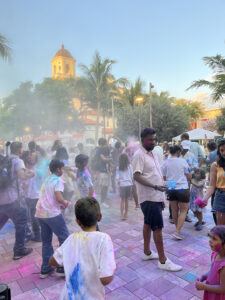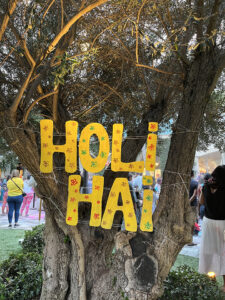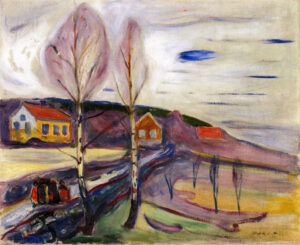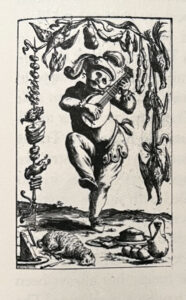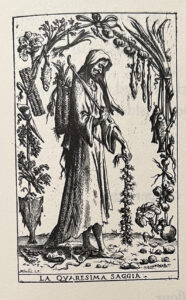It is Holi today, the Hindu Festival of Colors. A festival of spring and a time, like so many other significant days in so many cultures, to make wrongs right and to make amends. In springtime, no less. How appropriate, at this time of new beginnings: We are just a couple of weeks shy of the vernal equinox and the renewal of life and Earth’s abundant green is not far beyond. I am not the sort of person who holds grudges, but if I did, this is the time I would seek to set those things aside and to start fresh.
I had a work meeting last week with Pranoo Kumar, who runs a fantastic book store in West Palm Beach called Rohi’s Readery. Pranoo had read a story for the Stay Awake Bedtime Stories series that I host, and she chose to read a book about a girl who has two dads. But it is a state university I work for, in Florida, and Pranoo’s story made people in the administration building nervous. The governor here likes to throw the word freedom around and that’s all well and good if your views align with his, but mine, most certainly, do not. Nor do Pranoo’s, nor most of the people I know, as we all watch one of our most basic and essential rights –– the freedom of speech –– erode away under restrictive state policies that even a year ago I never thought I’d witness here in the USA. Without getting too far off track and without being too critical of the current government of the State of Florida (for if I am and if a recently proposed piece of legislation passes, I’d have to register my blog with the state for writing critical commentary about the government), I’m writing this admittedly not very positive paragraph just to set the scene, which is this: John, going to Rohi’s Readery last Wednesday, to meet Pranoo for the first time and to break the news to her that we won’t be able to broadcast her reading for our series.
Fast forward ten minutes: Pranoo and I hit it off and I feel like I’ve got a new best friend or sister, and I bought a stack of wonderful books from her shop. And Pranoo invited me to the Holi celebration she had been planning in West Palm Beach, right outside her shop, on Saturday. So on Saturday afternoon, I went.
If you’ve never been to a Holi celebration, all I can say is you need to find one and you need to go. It is so utterly joyful, this celebration of love and spring, especially when the colored chalk dust starts flying. Everyone is absolutely beaming. How could they not be? I watched as a few hundred adults suddenly became kids again, while the kids around them welcomed their parents’ and grandparents’ brief return to childhood with open arms. The music, the dancing, the bursting colors … it was wonderful, all of it. And perhaps this was Pranoo’s way of making the wrongs that are being heaped upon us here in this place right. We met, I broke the bad news to her, we commiserated, and then we began making plans for helping all kinds of kids –– black or white, queer or straight, able bodied or disabled, kids of any sort –– find their voices. What will come of our partnership, I do not know, but I am excited to see what develops. We made amends for things beyond our control. We chose to be light bearers in dark times. And then we celebrated the arrival of spring with exploding colors. Pranoo and the things she does for our local community help me feel encouraged again. Here are some pictures. And as Pranoo told me, “Holi Hai!”
Top photo: My new friend, Pranoo Kumar, after the color celebration on Saturday. The three photos at the end of today’s post are also scenes from the celebration in West Palm Beach on Saturday. I met the guy in the blue shirt as I was walking back to my truck. His complete happiness stopped me in my tracks, and I asked him if I could take his picture. He said yes. I’d bet my bottom dollar no one who walks the halls of the State Capitol in Tallahassee is as full of joy as he.
COME SEE US!
We’ve got two springtime pop-up shops in the works, and maybe even a third (the Art and Flavor festival at Hatch 1121 here in Lake Worth on Saturday March 18). At each, you’ll find our full selection of handcrafted artisan goods for Easter and Springtime from Germany, Sweden, and Ukraine, plus a few other surprises, too.
Find us first at the DELRAY BEACH ST. PATRICK’S DAY PARADE & FESTIVAL in Downtown Delray Beach this Saturday, March 11. The parade, I think, begins at noon, but our Convivio Bookworks tent will be at Old School Square, 51 North Swinton Avenue, from 1 to 7 PM. And on Saturday April 1, we’ll be at JOHAN’S JOE in Downtown West Palm Beach from 7 AM to 3 PM for a little Springtime Market that Johan’s Joe and Convivio Bookworks are hosting together. We had a Christmas Market last December and it was so much fun and we met so many wonderful people, we’ve decided to collaborate again for Easter.
Meanwhile, at our online catalog, save $10 off your purchase of $85 or more, plus get free domestic shipping, too, when you use discount code BUNNY at checkout. It’s our Zippin’ Into Springtime Sale, good on everything in the shop, now through Easter (and probably a bit beyond, too). What’s new? Some great new handcrafted artisan goods for Easter from Germany, plus a new supply of real pysanky eggs and wooden crucifixes from our friend Kyrylo Cherniak in Ukraine. It took almost a whole year for him to gather these things from the artisans he works with throughout Ukraine, and it is our deep privilege and honor to bring them to you. Kyrylo, so far, is safe and as well as can be. And some new paper mache egg containers and splint wood baskets just arrived from Germany, too, and how about a German nutcracker that happens to be a leprechaun for St. Patrick’s Day? We’re about to load about two or three dozen new hand embroidered tea towels made by my mom onto the website, too. Millie’s Tea Towels: you love them, and Mom loves making them for you! CLICK HERE to shop! And don’t forget to use discount code BUNNY at checkout if your order is $85 or more.

